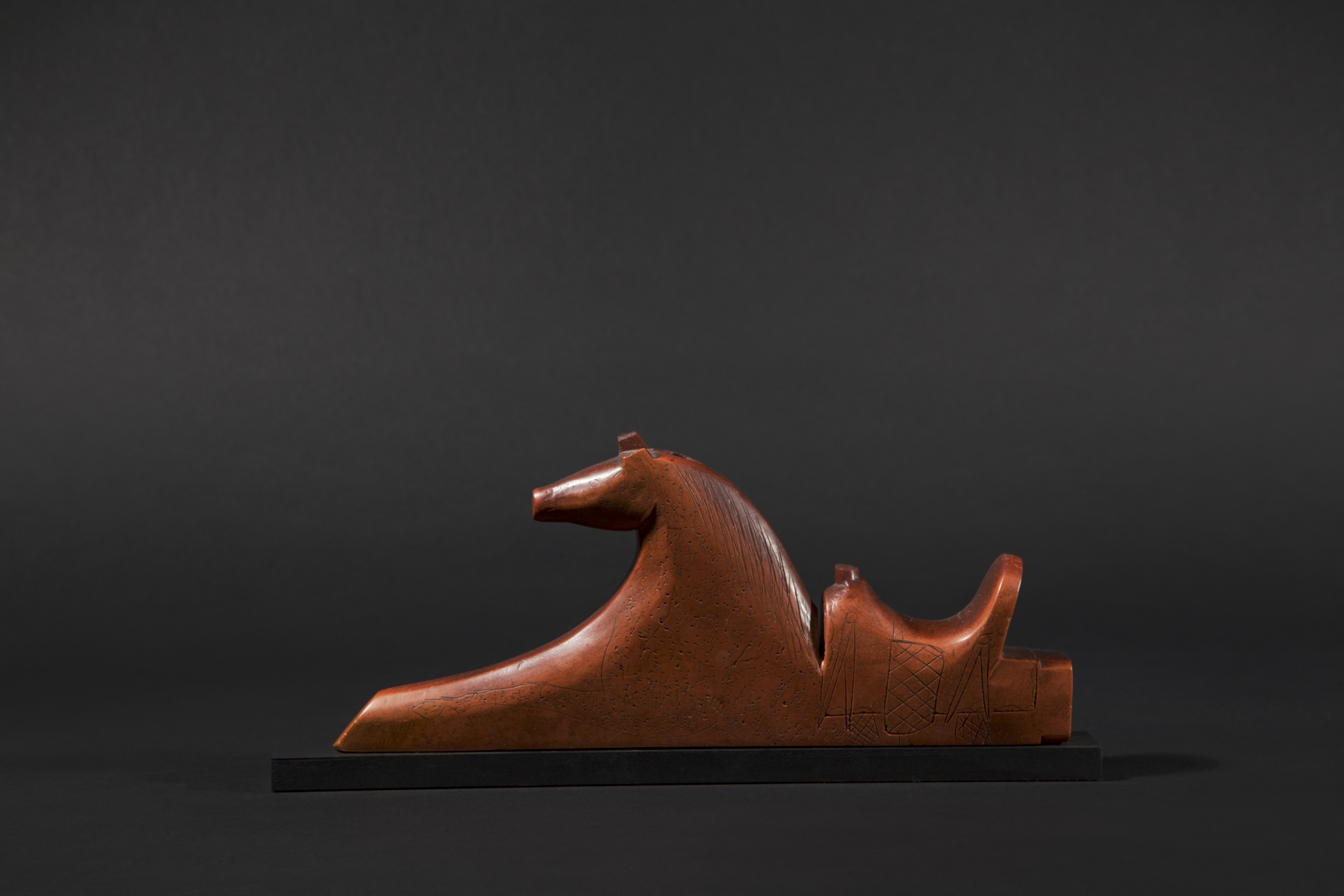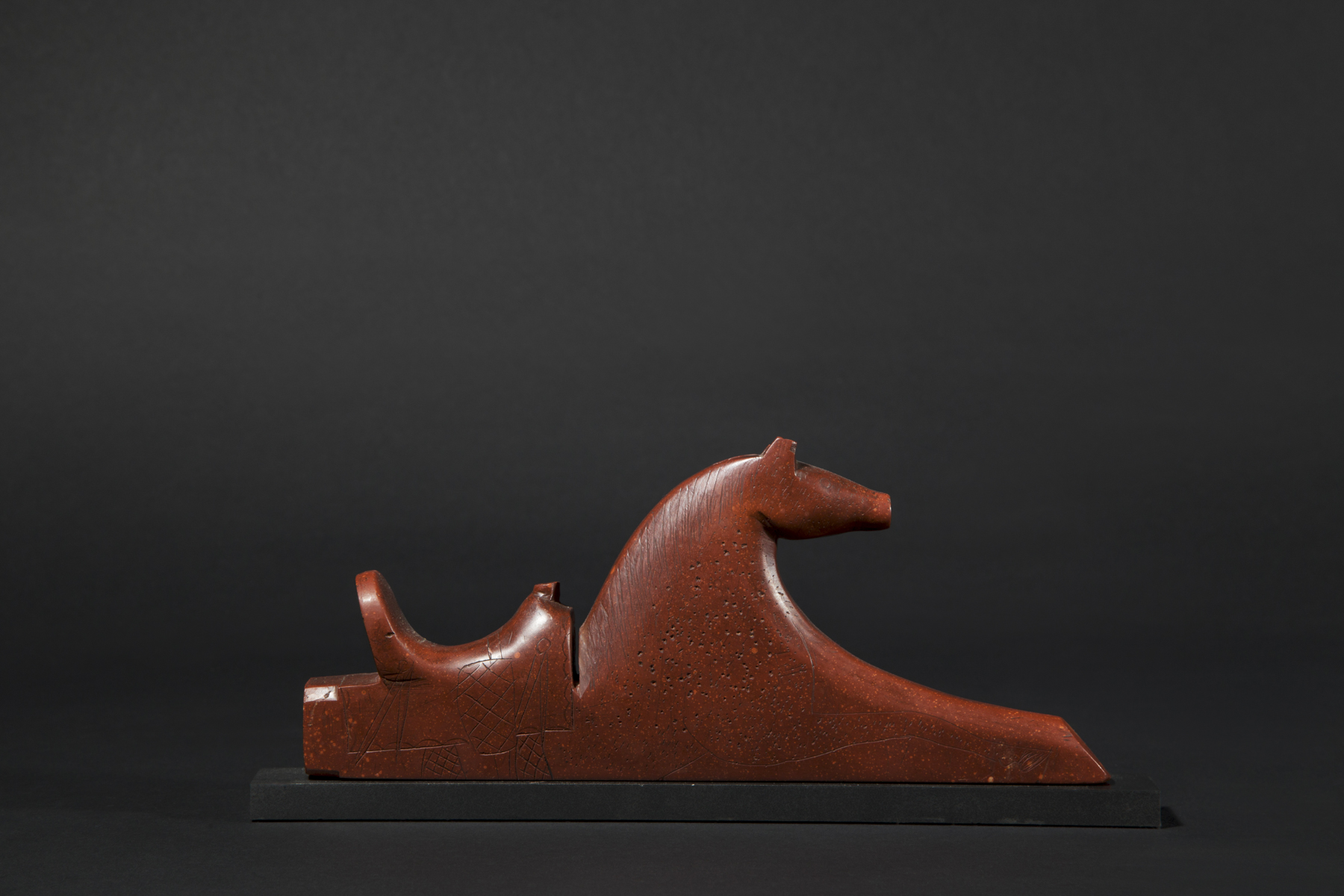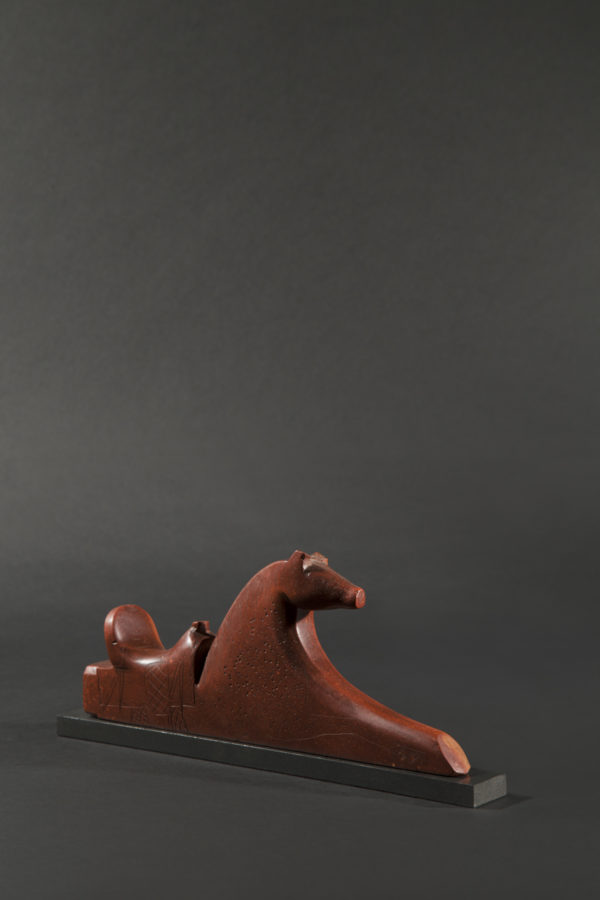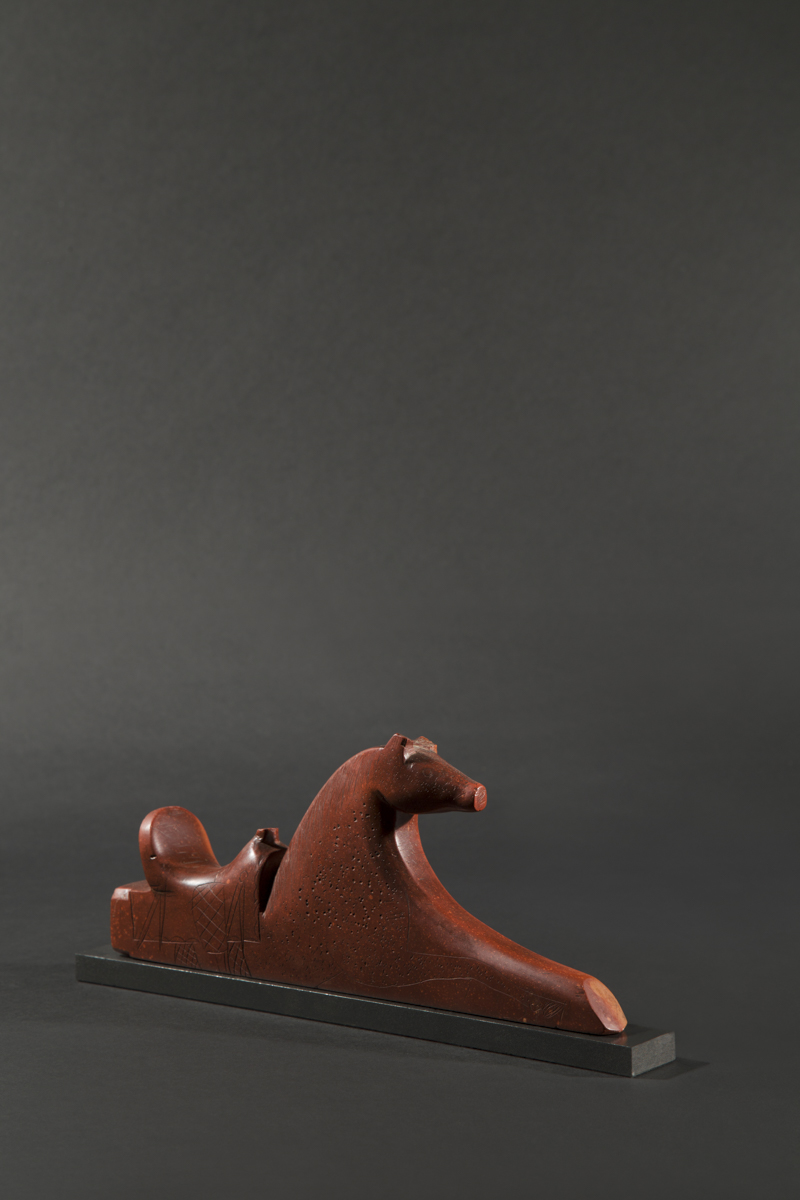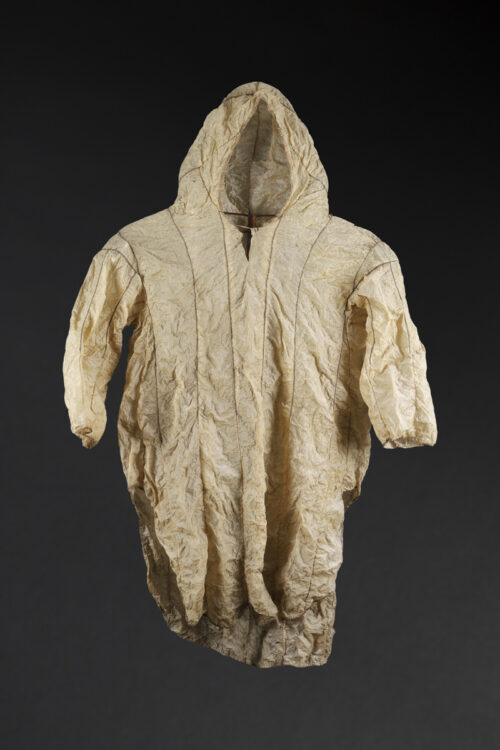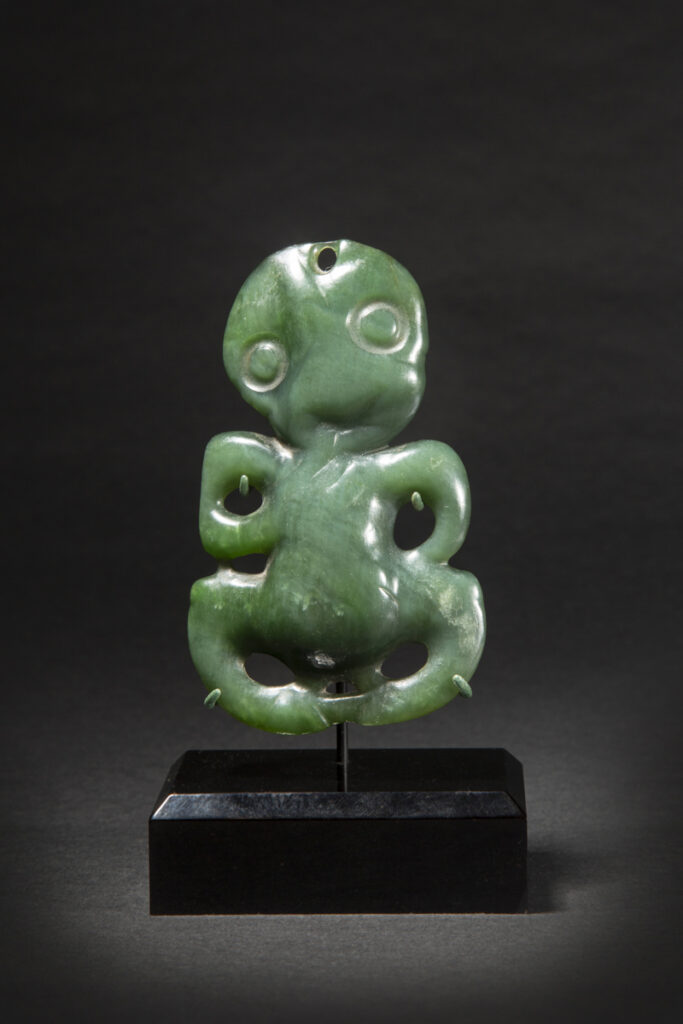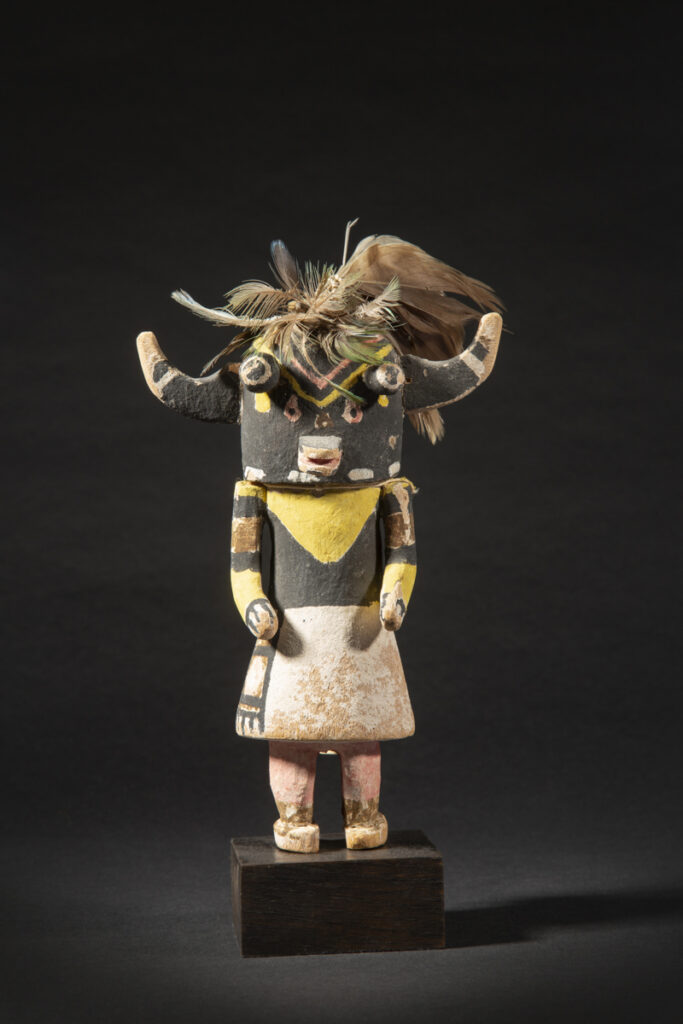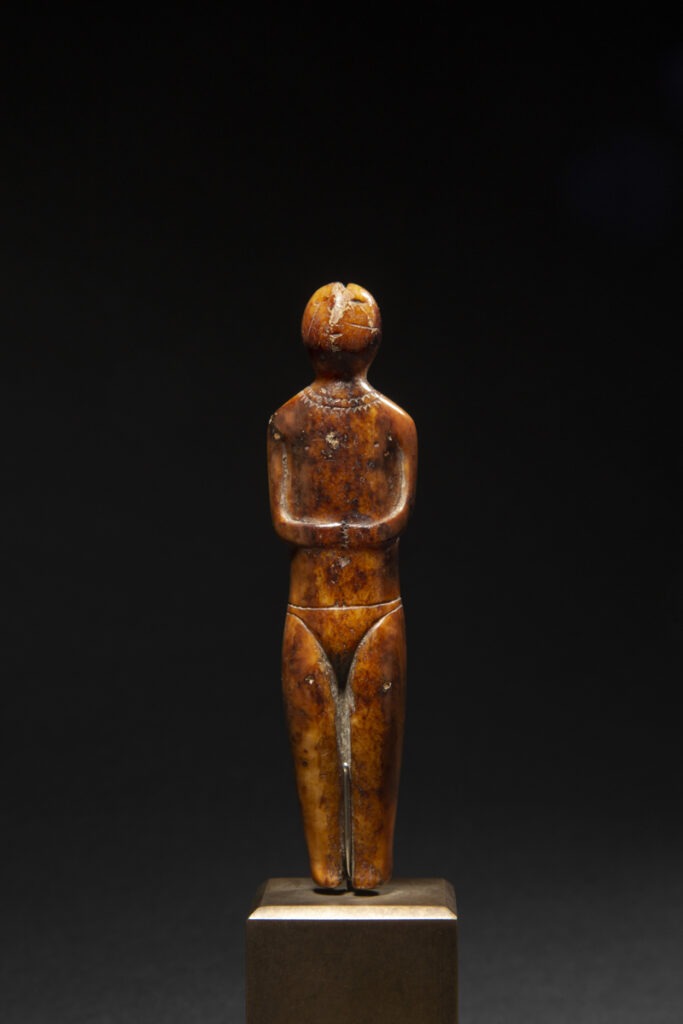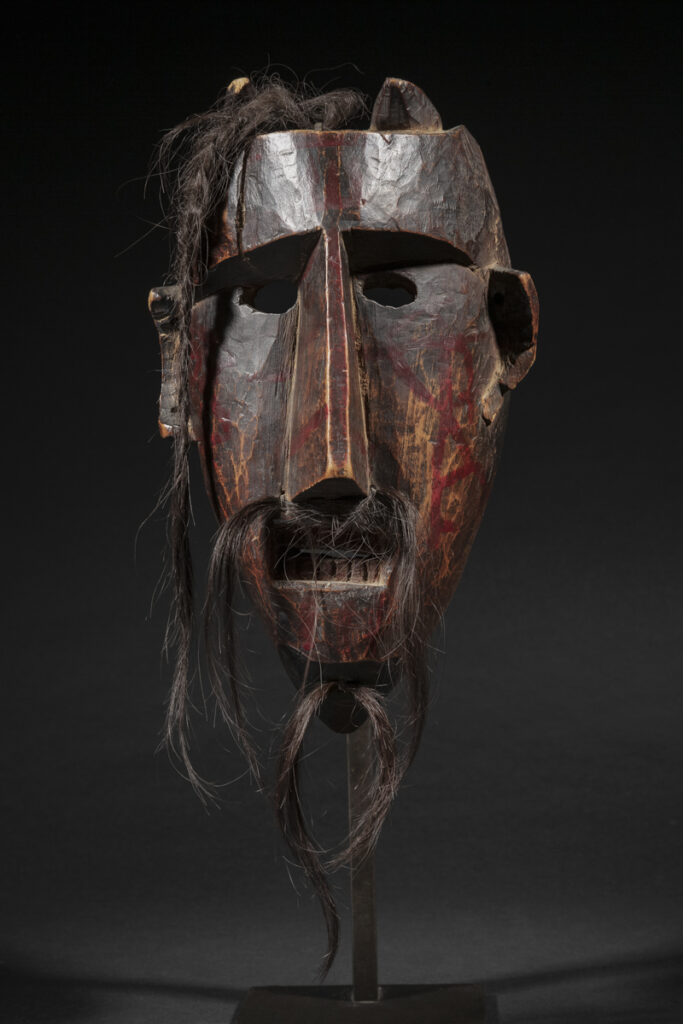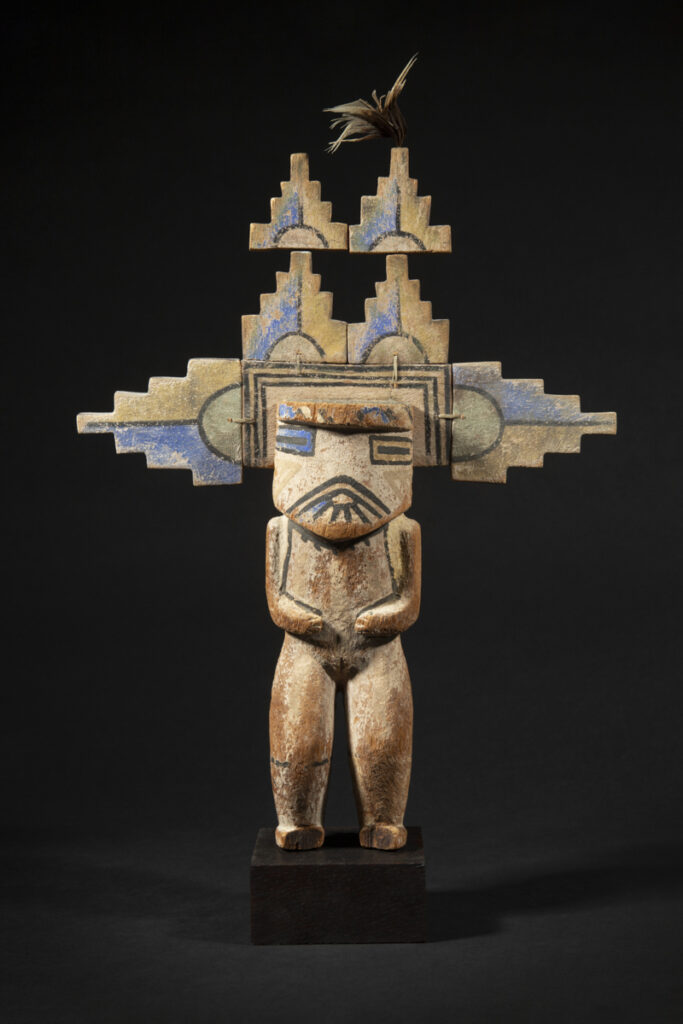North America | USA
Pipebowl
USA
Horse Effigy Pipebowl
Sioux Lakota, Plains
Carved catlinite
Circa 1880s
Length: 8 ¾ in. – 22 cm
Provenance
Ex collection Helene Sage, New Mexico
Ex collection Ted Trotta-Bono, New York
Ex collection privée, Nice
Exhibition & Literature:
“Beyond Hollywood: American Indian Identities”, June-December 2018, Museum of Ethnology, Valencia, Spain
Lakota Horse Effigy Pipebowl 22 cm / Galerie Flak
On request
This is a pipe!
This Sioux pipe bowl, made of catlinite, represents a stylized horse. This type of pipe is known as an « arched-neck horse head and saddle pipe ».
Among the Plains Indians, the most sacred object was the calumet pipe. Calumets were used in times of war and times of peace to ensure protection and success.
Smoking was a means of creating harmony with the spiritual elements, with the smoke symbolizing prayer, a gift or a request for assistance from the Great Spirit.
Before talking of holy things, we prepare ourselves by offerings. One will fill his pipe and hand it to the other who will light it and offer it to the sky and earth. They will smoke together. Then they will be ready to talk.
Mato-Kuwapi (Chased by Bears), a Santee-Yanktoni, Sioux warrior.
This Sioux pipe bowl, made of catlinite, represents a stylized horse. This type of pipe is known as an « arched-neck horse head and saddle pipe ».
Among the Plains Indians, the most sacred object was the calumet pipe. Calumets were used in times of war and times of peace to ensure protection and success.
Smoking was a means of creating harmony with the spiritual elements, with the smoke symbolizing prayer, a gift or a request for assistance from the Great Spirit.
Before talking of holy things, we prepare ourselves by offerings. One will fill his pipe and hand it to the other who will light it and offer it to the sky and earth. They will smoke together. Then they will be ready to talk.
Mato-Kuwapi (Chased by Bears), a Santee-Yanktoni, Sioux warrior.
Explore the entire collection
